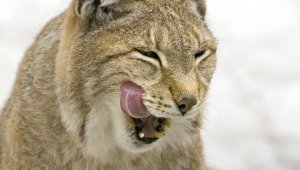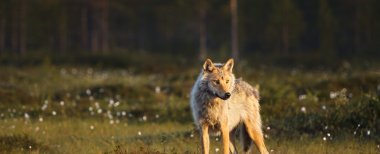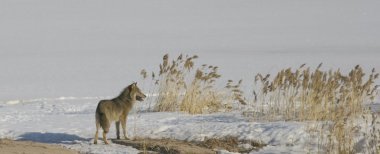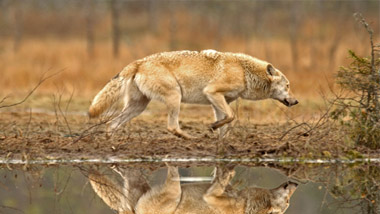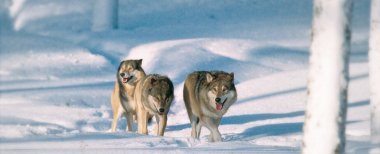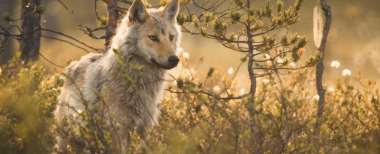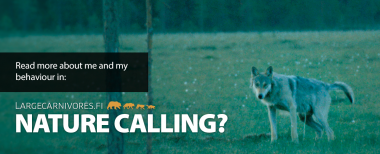Meeting a wolf
The wolf is a sizeable wild animal and large carnivore and you should remain calm and fearless when coming face to face with one. A rabid wolf or a wolf that is put on the defensive may harm a human, but this has not happened in Finland since the late 19th century.
The Population-Based Wolf Hunt Has Ended
Mon Feb 22 13:25:00 2016
A total of 27 applications for the population-based hunting of 116 wolves were received. The Finnish Wildlife Agency assessed and examined the applications case-specifically and granted licenses for the hunting of 46 wolves for population management purposes. Only three licenses were unused.
Appeals were lodged in regional administrative courts regarding all favorable decisions, but the appeals did not lead to a standstill clause. The granted licenses were valid for 30 days during 23.1.–21.2.2016.
The hunt’s progress could be followed online with the Finnish Wildlife Agency’s “catch chart”. Catch data were automatically updated in the chart after the reception of the catch notification. The chart will be complemented with more details about the wolves after they have been examined by the Finnish Natural Resources Institute.
Assessment of the Trial’s Impact
The two-year trial has amassed data about how the population-based hunting impacts the wolves’ behavior, the pack’s vitality and the people’s attitudes. The Finnish Wildlife Agency and the Natural Resources Institute will assess the hunt’s practical implementation by next autumn. The Ministry of Agriculture and Forestry will later decide on its continuation.
Territory-based hunting for population management purposes aims to secure the wolf population’s already suitable protection level and improve the coexistence between humans and wolves according to the Wolf Management Plan’s objectives. The EU’s Habitats Directive enables the population-based hunting of large carnivores on the conditions that the game species has a management plan and that the hunting will not weaken the obtainment of the protection level – and if there is no other satisfactory solution to the conflict.
Population-based hunting in Finland has previously concentrated on lynxes and bears, clearly reducing conflicts caused by them. This type of hunting has created added value to the large carnivores and increased their acceptance amongst the locals.
Data on the population-based hunt's wolf catches
Finland’s Wolf Management Plan
For more information:
Härkönen, Sauli, Director for Public Administration Tasks, The Finnish Wildlife Agency
029 431 2104, sauli.harkonen@riista.fi
Report a sighting
A large carnivore sighting can consist of seeing the animal itself, or spotting the tracks, droppings, carcasses, claw marks or other signs left behind by the carnivore somewhere in the wilds. By reporting your sighting you are taking part in game animal research. Every year tens of thousands of sig...
Damage prevention
Occasionally large carnivores cause damages to domestic animals. Livestock and hunting dogs are the most common targets. However, a significant portion of large carnivore damages may be avoided with the right kind of preventive measures.
Large carnivores in populated areas & road accidents
A large carnivore that causes damage, repeatedly acts in a problematic manner or ventures into a populated area must always be reported to the emergency exchange (tel: 112). The primary aim is to scare the predator away from coming too close to populated areas. The animal is only put down if it is b...
